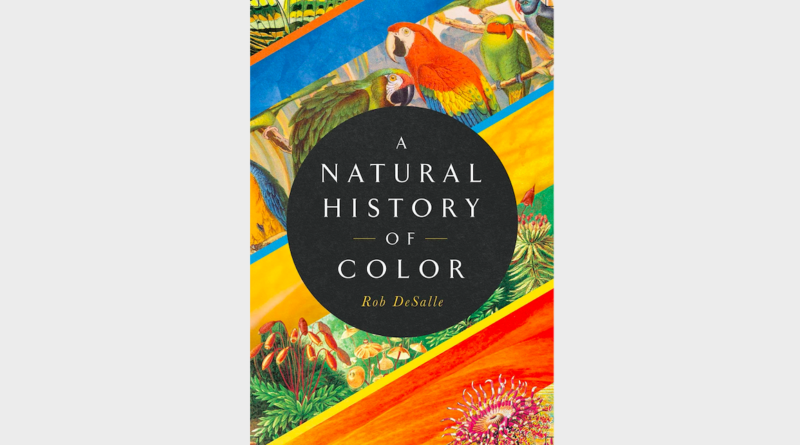REVIEW: ‘A Natural History of Color: The Science Behind What We See and How We See It’
Image courtesy of Pegasus Books / Provided by official site.
The new book by Rob DeSalle and Hans Bachor takes a close look (pun intended) at the utterly fascinating world of color in the human world, the animal world and the universe in general. A Natural History of Color: The Science Behind What We See and How We See It, out now from Pegasus Books, is a fine example of science communication, and the authors are expert at taking difficult-to-understand concepts and breaking them down into their component parts. There are sections of these 200-plus pages that can be a bit overwhelming with detail, but non-science majors should not let that scare them away. For the most part, DeSalle and Bachor open up the world of color for any reader to enjoy.
Who knew the mechanics of the eye were so intricate? Who knew there’s so much to say about color and culture, color and genes, color and evolution, and color and the far reaches of the universe? The answer to these queries is DeSalle, Bachor and the other scientists who have been investigating color for quite some time. What’s great about A Natural History of Color is that the authors give ample credit to those who came before, dating back to Isaac Newton, Charles Darwin and beyond.
This book does not present new evidence to upturn the scientific consensus (or rather consensuses) on color in the world. Instead, it serves as a readable summary of where the field of inquiry currently stands. What’s the 2020 status after years of experimenting, theorizing and debunking?
Perhaps the topic that receives the most ink within these pages is how color ties to the evolutionary process. Darwin’s original words from On the Origin of Species are dissected and examined, ditto for the many other researchers who were influenced by the father of evolution. There’s an entire section about Darwin and his connection to another natural historian, Alfred Russel Wallace. There are thoughtful passages about color and how it’s tied to natural selection. There’s also a great deal of emphasis placed on the vision and color-experiencing of Homo sapiens as a species, plus ancestors like the Neanderthals. A clear point is made, and reinforced throughout the narrative, about the visible spectrum for humans (a range measured in nanometers), and the wavelengths that are either above or below that seeable medium, such as radio waves and ultraviolet rays.
The genetic discussions in the book are rather heady, and occasionally it took some re-rereading to understand the scientific concept being described. That said, the authors use many well-known literary devices — such as metaphors — to connect the examined concepts to imagery that is more commonplace. In fact, there’s a whole chapter devoted to Gary Larson’s interpretation of color and animals, and that bit of humor was appreciated and led to further comprehension.
The best attribute of A Natural History of Color has to be its wonderment with the subject matter. It’s obvious that DeSalle, a curator at the American Museum of Natural History, and Bachor, an emeritus professor at The Australian National University, are enamored with the history of this field, its current understanding and the possibilities in research for the future. It’s tough to read these pages and not have some of that scientific enthusiasm rub off. The world of color may still be a head-scratcher after reading these 200-some pages, but there’s no doubt that an appreciation is well-earned when seeing the world through DeSalle’s and Bachor’s eyes.
By John Soltes / Publisher / John@HollywoodSoapbox.com
A Natural History of Color: The Science Behind What We See and How We See It by Rob DeSalle and Hans Bachor. 272 pages. Pegasus Books. $28. Click here for more information.

